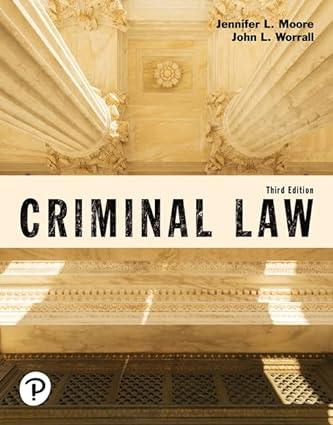Question
Imagine a market for flowers. A government imposes a $2 per unit (per bouquet) sales tax on this market. An economist says that this tax
- Imagine a market for flowers. A government imposes a $2 per unit (per bouquet) sales tax on this market. An economist says that this tax would cause a deadweight loss. Your 12 year old brother does not understand what that means. Explain clearly and briefly what a deadweight loss of such a tax would mean in this market and how it would relate to economic efficiency.
- Microeconomists
a. study economy-wide trade-offs such as the trade-off between inflation and unemployment.
b. can assume that scarcity happens only on a macro level of the national economy.
c. can ignore opportunity costs.
d. study choices and trade-offs faced by individuals, households and firms.
3. Which of the following is an example of a positive, as opposed to normative, statement?
a. Wealth inequality is unjust.
b. On average, in the United States women earn 82 cents for every dollar a man earns.
c. Women should be compensated for their household labor.
d. The market system is fair to its participants.
4. Which of the following is an example of a public good?
a. Electricity from PG&E used to power your small apartment in San Francisco. (PG&E is a utility company which provides electricity in California.)
b. Eggs produced by chickens in California dairy farms.
c. Atlantic cod from Eastern Atlantic Ocean.
d. A fireworks display for 4th of July over the Siskiyou Lake.
5. Which of the following is closest to a perfectly competitive market?
A. market for electricity production and delivery
B. market for commercial airplanes production
C. market for wheat
D. market for luxury handbags
6. Which of the following is most likely to fall victim of the tragedy of the commons?
A. Sheep grazing in enclosed private fields.
B. Dairy cows living on farms and producing milk.
C. Pandas living in zoos.
D. Blue fin tuna living in the ocean.
E. Trout raised in private ponds.
7. Which of the following statements is FALSE?
A. The phenomenon of diminishing marginal product implies that the marginal cost of production will start rising as more of the good is produced.
B. Average total cost curve is U-shaped.
C. When long run average total cost falls as production rises, the firm is experiencing economies of scale
D. Average total cost curve always crosses marginal cost curve at the minimum of marginal cost.
8. Imagine a competitive market for pencils. What would happen to the equilibrium price and the equilibrium quantity of pencils if the price of erasers, a complement for pencils, deceases and the number of pencil producers decreases?
A. The equilibrium price of pencils would fall but the effect on the equilibrium quantity would be ambiguous.
B. The equilibrium quantity of pencils would rise but the effect on the equilibrium price would be ambiguous.
C. The equilibrium quantity of pencils would fall but the effect on the equilibrium price would be ambiguous.
D. The equilibrium price of pencils would rise but the effect on the equilibrium quantity would be ambiguous.
9. Victor gives up his $35,000/year job as a car mechanic to open his own car rental business. His rental firm's yearly fixed costs of rent, equipment and insurance are $15,000. The variable costs of labor and materials are $80,000 per year. According to his market analysis, his annual revenue from the rental business should be $150,000. What would be his accounting profit per year? What would be his economic profit per year?
A. His accounting profit would be $150,000. His economic profit would be $55,000.
B. His accounting profit would be $20,000. His economic profit would be $10,000.
C. Both his accounting and his economic profit would be $55,000.
D. His accounting profit would be $55,000. His economic profit would be $20,000.
10. Which of the following is true?
A. Economics is the study of the production and distribution of money.
B. Economists study human decision making in the face of scarcity.
C. Economists use controlled experiments to test all of their theories especially in macroeconomics.
D. Economists assume that resources are infinite.
Step by Step Solution
There are 3 Steps involved in it
Step: 1

Get Instant Access with AI-Powered Solutions
See step-by-step solutions with expert insights and AI powered tools for academic success
Step: 2

Step: 3

Ace Your Homework with AI
Get the answers you need in no time with our AI-driven, step-by-step assistance
Get Started



